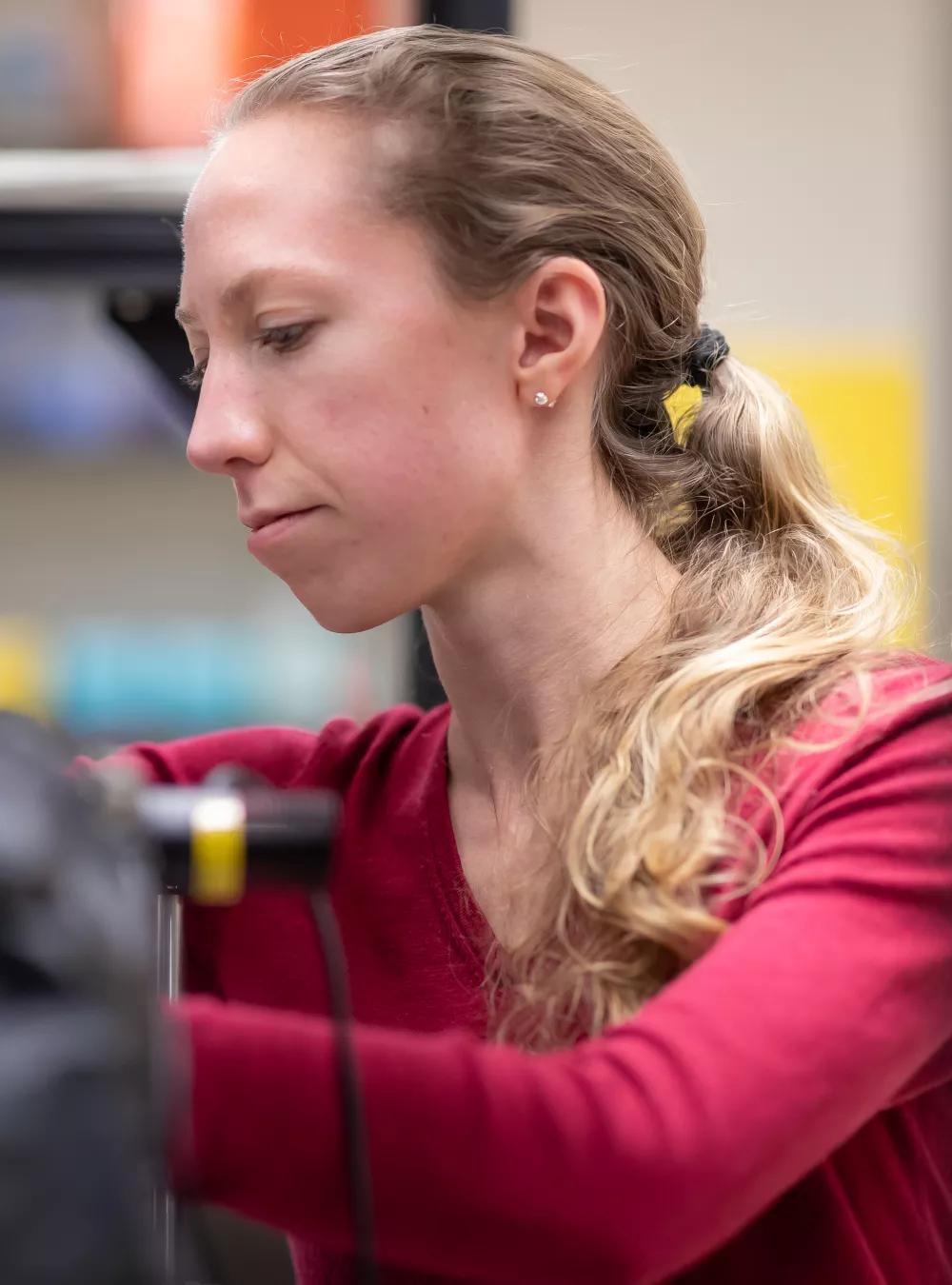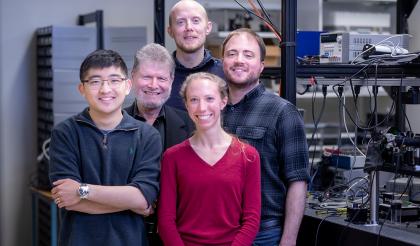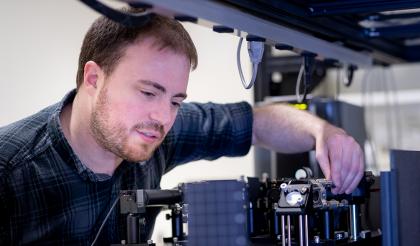While quantum physics may seem like science fiction to many, its real potential is being explored by scientists worldwide. MITRE’s quantum physicists believe we can harness the extraordinary capabilities of tiny quantum bits and transform technology.

Building the Future, Qubit by Qubit
The booming field of quantum information systems (QIS) is developing emerging technologies that could revolutionize such fields as cybersecurity, defense, finance, manufacturing, and life sciences. Around the world, countries—including the United States—are investing billions of dollars in QIS research.
The field of QIS encompasses three overlapping scientific areas: quantum computing, quantum sensing, and quantum communications. For more than two decades, Dr. Gerry Gilbert, MITRE chief scientist for quantum systems and an internationally known expert in QIS, has focused his efforts as a physicist on the quest to apply quantum mechanical principles to real-world computing, sensing, and communications. Dr. Gilbert earned his doctorate under Nobel Laureate Professor Steven Weinberg and was postdoctoral research fellow to Professor Stephen Hawking.
In the past year, MITRE launched a major initiative to make revolutionary progress in quantum information science. The objectives of this research program include the development of hardware and protocols necessary for universal photonic quantum computing, unconditionally secret quantum communications, and quantum sensing.

Clockwise from top: Mikkel Heuck, Andrew Golter, Genevieve Clark, Mark Dong, and Gerry Gilbert in MITRE's Quantum Lab.
Combining Expertise Across Organizations
As principal investigator (PI) of the initiative, Gilbert has brought together a group of quantum experts to combine their expertise to tackle this profound challenge. The MITRE scientists performing the research with Gilbert are Dr. Genevieve Clark, Dr. Mark Dong, and Dr. D. Andrew Golter. They will soon be joined by visiting scientist Dr. Mikkel Heuck.
The quantum initiative team members include Dr. Dirk Englund of the Massachusetts Institute of Technology, Dr Paul Alsing and his team at the Air Force Research Laboratory (AFRL), and Dr. Matt Eichenfield and his team at the Sandia National Laboratory (SNL). "I'm honored to be working with such renowned scientists as Dirk, Paul, Matt and their excellent teams, " Gilbert says.
How important is their work? Consider this:
By solving certain equations much more rapidly than classical computers, quantum computers could accomplish great feats. For instance, they can vastly improve modeling capabilities in molecular chemistry, leading to the creation of new medicines and the synthesis of new materials. They can also break cryptographic codes and speed up the computation of optimized financial portfolios.
But that’s just the beginning.
Quantum technology can be applied to measure/identify things at the smallest possible scale. Quantum sensing, the second area of QIS, is already leading to the highest resolution imaging allowed by the laws of nature. For example, a quantum sensor on a satellite in space might reveal features that would otherwise go undetected.
The third area of QIS, quantum communications, includes the creation and unconditionally secret distribution of cryptographic keys. (Learn more at "What Is Quantum Technology?" below.)
“At MITRE, we recognized the potential in quantum computing early on, and we’re proud to be playing a key role in the evolution of the field,” says Dr. Jay Schnitzer, MITRE vice president and chief technology officer. “Part of our job is to help the government identify emerging technologies that could transform their missions and bring those innovations to fruition—no matter how long it takes.
"We believe we can more quickly reach our goal and achieve success by working closely with such distinguished organizations as AFRL, MIT, and SNL,” he adds.
Pursuing the Physical Embodiment of the Qubit
Around the world, many other research organizations have embarked on the same challenge: how to harness quantum coherence and entanglement of quantum bits (qubits), the basic building blocks of a quantum computer, to solve certain real-world problems that cannot be efficiently solved with a classical computer.
At present, physicists are exploring about 10 qubit instantiation choices. Each approach presents its own set of challenges and advantages. A key concern relates to keeping the qubits in the proper state—the state of quantum superposition or entanglement—to perform effectively. Unacceptable changes in the quantum state of a qubit are referred to as "decoherence."
The MITRE quantum research team is pursuing photonic qubits--that is, qubits made from elementary particles of light. Photons don't directly interact with each other, and thus do not directly cause decoherence to each other.
While this is a good thing, photons indirectly interact with each other through their effect on the environment. In addition, it's precisely the interaction between qubits that enables the execution of a crucial quantum computational gate, which is needed to enable quantum computing.
The mixed set of challenges and opportunities provided by photons is complex, so the MITRE quantum research team, working with its partners at MIT, AFRL and SNL, is pioneering new solutions.

Andrew Golter at work in MITRE's Quantum Lab.
Building a Quantum Lab
For quantum computing to work its magic, there needs to be large numbers of qubits available to enable computations. We're addressing this challenge by exploring integrated quantum photonic platforms in our new Quantum Lab at our Bedford, Massachusetts, location.
“We're very optimistic that the approach we're pursuing will work,” Gilbert says. “The scientific team we've assembled is truly outstanding. Due to this, and the detailed features of our technical approach, we think our chances of success are very good.
“Our goal is to identify those problems that could be solved by quantum computers that would be most beneficial to the world and help our government take advantage of the technology,” he adds.